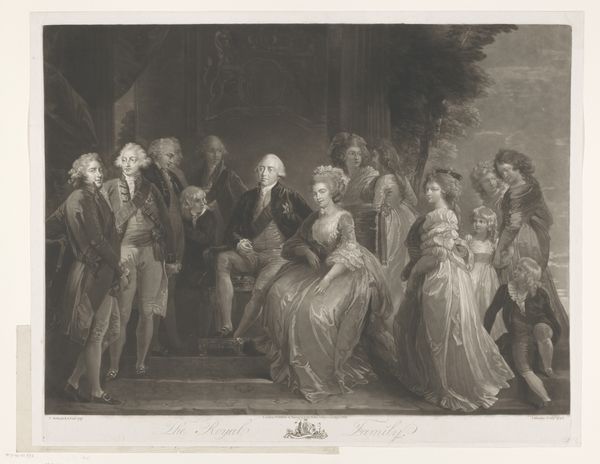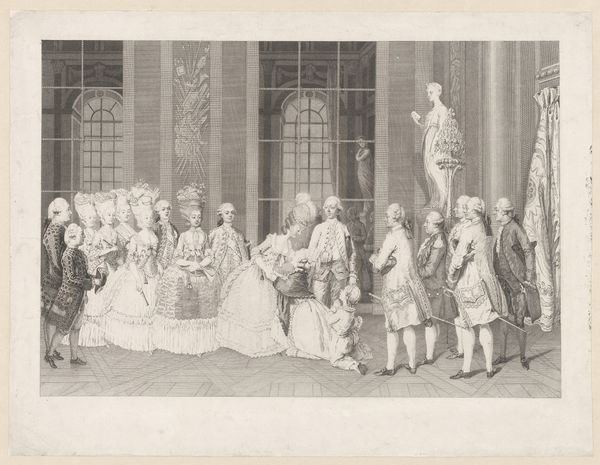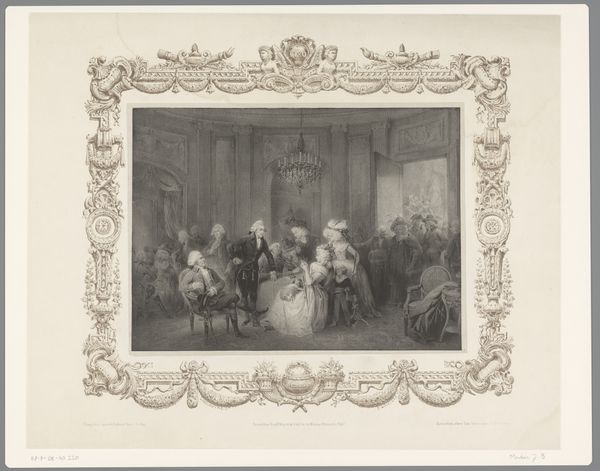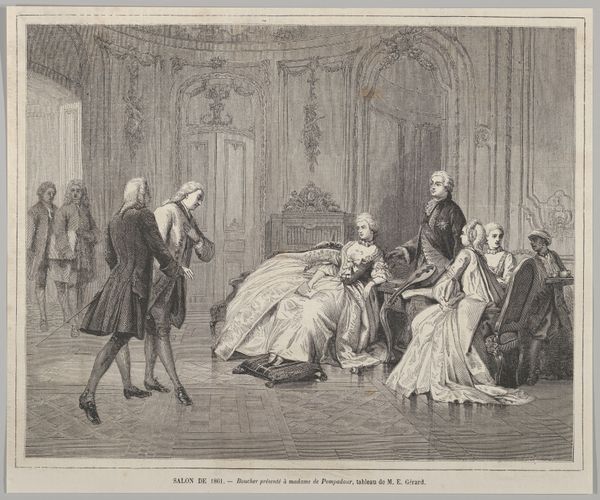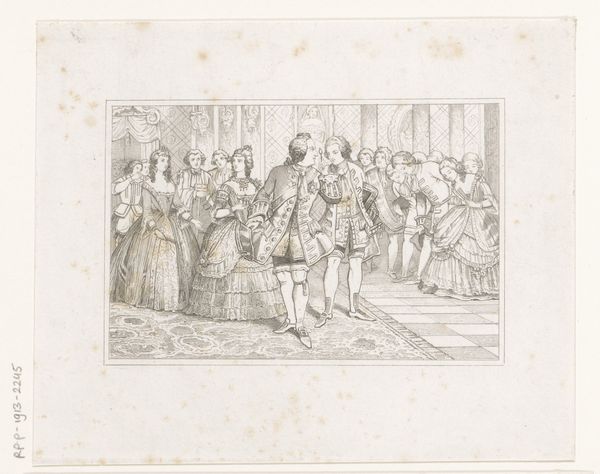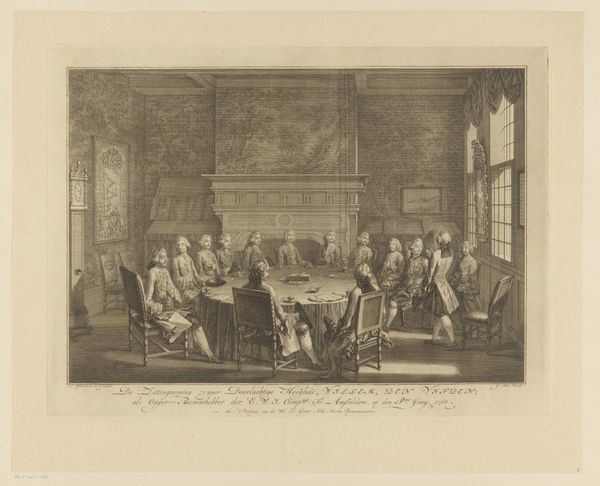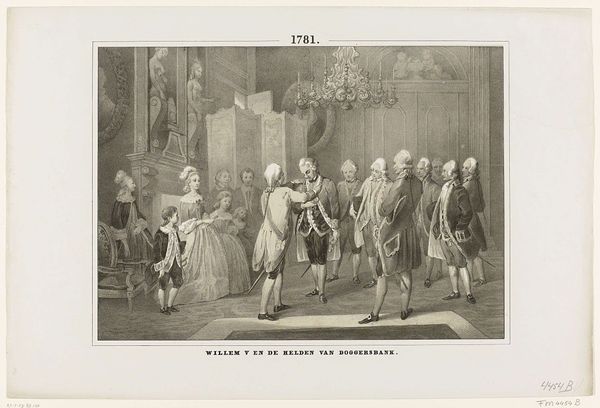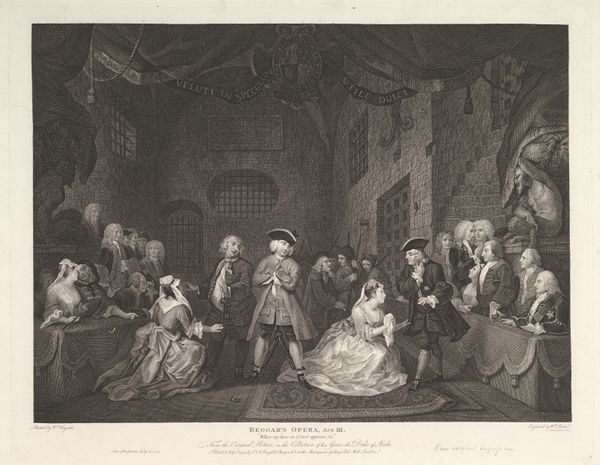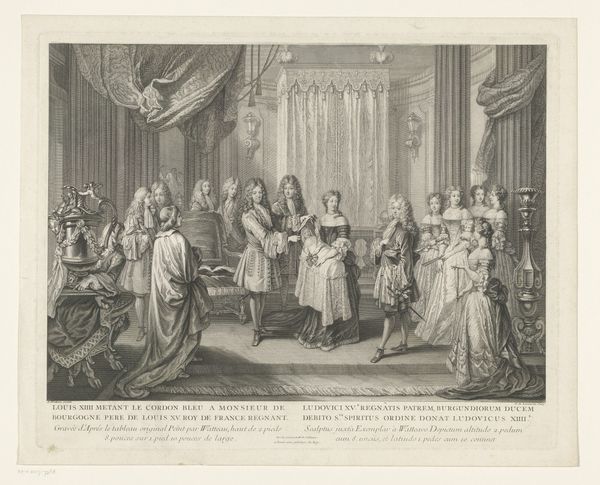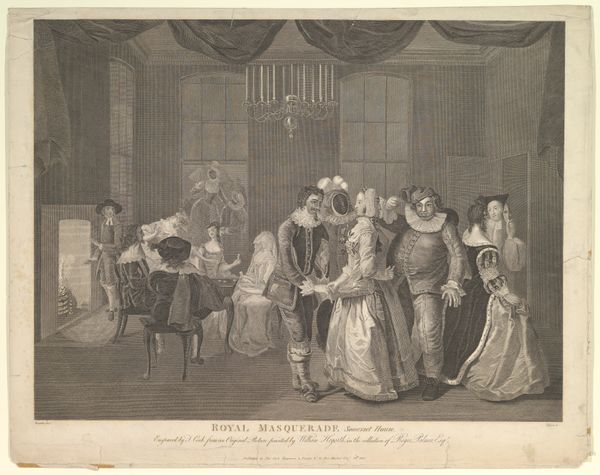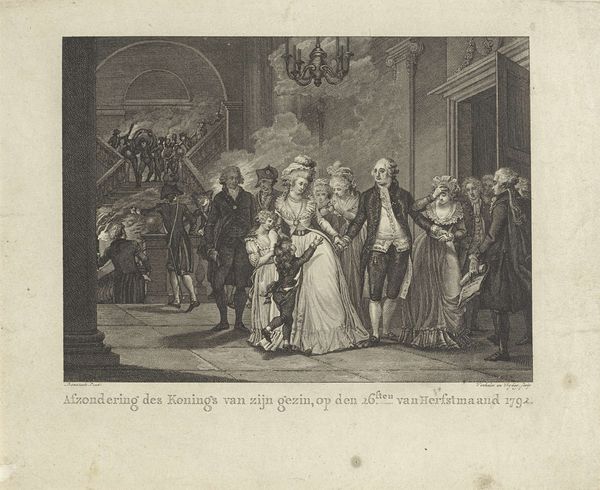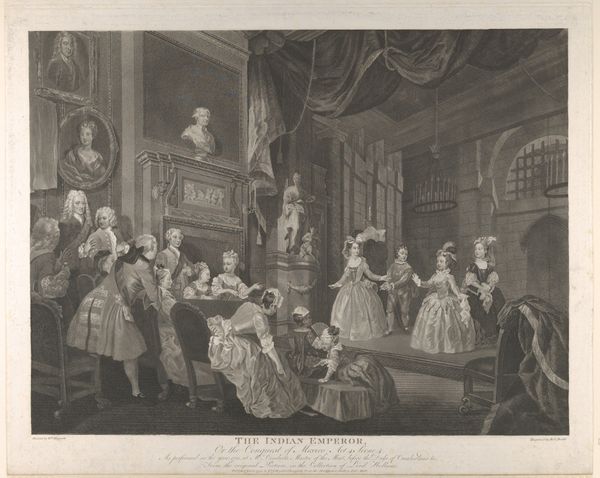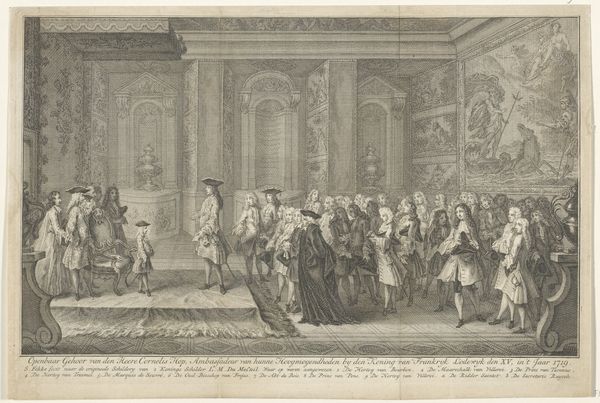
Marie Antoinette: The Queen of Fashion: Marie Antoinette Visiting Mme Bellegarde 1779
0:00
0:00
Dimensions: height 375 mm, width 485 mm
Copyright: Rijks Museum: Open Domain
Curator: We are looking at “Marie Antoinette Visiting Mme Bellegarde” an engraving made in 1779 by Antoine Jean Duclos. Editor: The crisp lines create a stage for these figures; it looks almost theatrical. There is such fine detail across the dress of each figure that I'm drawn to each one. Curator: And indeed it is! Duclos here commemorates a specific historical event: Marie Antoinette's visit to Madame de Bellegarde to announce her husband’s release in May 1777. It speaks to the queen’s role as not just a figurehead but an active political player, mediating justice. Editor: It is such a constructed image, so obviously staged, down to the placement of everyone, especially that child! It has that perfect Rococo sense of luxury. Curator: Well, the engraving style allows for wide distribution, serving to solidify the monarchy’s image, which was very common at the time. Note the architectural detailing: its setting reinforces the image of refined elegance. The figures form a sort of stage-like presentation which allows the public to feel as if they’re involved in Court happenings. Editor: I see what you mean. The high hairstyles and the elaborate dresses practically command attention, directing our gaze. I keep coming back to how precisely and intentionally these costumes are constructed. The way Duclos articulates their textures is remarkable. Curator: Absolutely. The engraving served a purpose, and the purpose had to be something that would appeal to all audiences. Think about the role fashion played in political representation. It's no coincidence that the Queen's garments command attention. Editor: It's interesting how this engraving transforms a political action into an image, blurring the lines between reality, representation, and even propaganda, when you consider that this all stems from a single act by the queen, yet that single act gains notoriety when shared publicly through pieces such as these. Curator: Indeed, it reveals to us the powerful way that visual imagery shaped public opinion and solidified the role of powerful figures like Marie Antoinette. Editor: Thank you; I now feel I see much more within its deceptively pretty frame.
Comments
rijksmuseum about 2 years ago
⋮
French queens were expected to set an example in the realm of fashion. As the wife of Louis XVI, Marie Antoinette threw herself into this task with enthusiasm. Together with her marchande de modes Rose Bertin and her hairdresser Léonard, she launched many a new fashion. Court etiquette dictated robes de cour – lavishly embellished gowns with wide skirts. When receiving visitors, Marie Antoinette wore a robe à la polonaise 1 2, but preferred an informal, loose-fitting gown when at her own pavilion in Versailles. This chemise de la reine 3 was quickly adopted by other women of the elite.
Join the conversation
Join millions of artists and users on Artera today and experience the ultimate creative platform.
